Sustainable Green Building Construction
Dr. S. Mohan, IIT Madras
| “Green” buildings are maturing as a financially viable strategy for reducing human consumption of energy, water, and materials which in turn promotes the sustainable development. Green building represents one strategy for reducing human impact on the environment. Green buildings can be generally defined as: high-performance, sustainable structures that more efficiently consume and harvest energy, water, and materials while reducing negative impacts on human health and the |
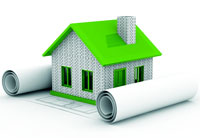 |
environment through a holistic approach to design, site usage, construction, operation, maintenance, and deconstruction at the end of a building’s useful life.
Their utility is well proven for owner in turn transferring the serene environment to the future generation. It provides the foundation for fundamental behavior shifts in the building industry and ultimately a successful return on investment. In the present scenario, demand is increasing for construction options that will contribute to achieving sustainable development. In this paper, the architect, the designer, the engineer and the environmentalist will all find examples of the sustainable attributes of green construction and precast concrete.
| The most important aspect of any discussion about the sustainability of buildings must be the actual performance of a completed building during its life. Construction industry is working hard to increase resource efficiencies, material recycling and environmental awareness by adopting new, green technologies and initiatives to build sustainably. This encompasses a broad range of issues such as energy use, water consumption, maintenance cycles, fitness for purpose and even fire safety. It is vitally important to approach the design of sustainable buildings with their whole life performance in mind – a short-term attitude simply will not deliver on long-term sustainability objectives. Buildings should be robust, energy efficient, healthy and comfortable for their occupants, whether for commercial, domestic or industrial uses. This emerging challenge for green building construction projects is to carry on this success in situations towards sustainable growth. Real beneficiaries of the green building are the homeowners due to |
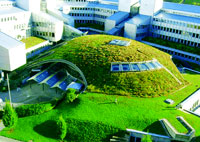
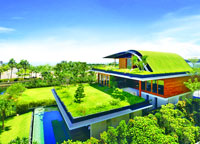
|
reduced energy and water bills provided by efficient buildings; they can also be the driver of a building’s long-term sustainability.
The Need for Green Housing
Two of the greatest challenges currently facing the global population are climate change and social and economic inequality resulting from resource scarcity. Green housing can begin to address these challenges by integrating the key areas of environmental and human health: protection of ecosystems; preservation of natural resources (including water, agricultural land, timber, minerals, ore, quarry products, and fossil fuels); reduction of atmospheric pollutants associated with energy use and materials manufacturing; and creation of safe, non-toxic indoor environments. A ‘whole-building’ approach to residential design and construction combines sustainable site design, water conservation, energy efficiency, environmentally preferable materials, and superior indoor environmental quality to achieve a green end product that meets basic human needs for shelter without compromising safety, security, and health needs.
In addition to reducing carbon emissions, green buildings can reduce a host of social and economic costs. For example, significant increases in chemical sensitivity have been linked to volatile organic compounds (VOCs) found in building materials and consumer products. Multiple Chemical Sensitivity (MCS) is a syndrome in which a sufferer experiences multiple symptoms upon exposure to minute amounts of everyday chemicals, producing some level of un-wellness all the time. Often the chemical concentration that triggers a reaction may be so low that the sufferer can't even smell the substance. Although there are a multitude of triggers for MCS, the products related to the building industry include chemicals emitted by carpets, particleboard, and paints, as well as sealants and adhesives.3 Healthy, low-emitting alternative materials and superior ventilation are two of the characteristics of green buildings that improve the health of occupants, and in turn lessen the financial burden on families and employers.
Moving Toward Green Residential Buildings
|
India being in a temperate climate, demand for cooling is more intensive than heating. Greenhouse gas emissions from buildings energy use significantly exceed those from transportation. It was predicted by International Panel on Climate Change (IPCC) that CO2 emissions from buildings (including through the use of electricity) could increase from 8.6 billion tonnes in 2004 to 15.6 in 2030 under a high growth scenario. Energy consumption at lower costs (passive methods) in buildings will offer greater potential to meet CO2 reduction targets than any other sectors. Energy used for heating and cooling can be reduced through ventilation, heat sinks, the use of solar panel and improved insulation. Electricity consumption can also be reduced through use of CFL & LED lighting or increased use of natural lighting and the use of energy-efficient appliances. Improved efficiency in the building sector and de-carbonizing the power sector could offer significant potential emissions reduction.
|
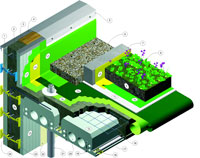
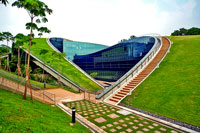
|
Green building rating in India: India has also joined the race. It started to mirror the global trend when LEED-India Programme was adapted from United States Green Building Council’s LEED (Leadership in Energy and Environmental Design) in 2007. This is purely a private initiative which is run by the Indian Green Building Council (IGBC) in India. The IGBC, which is part of the Confederation of Indian Industries - Sohrabji Godrej Green Business Centre (CII-GBC), has been promoting Leadership in Energy and Environmental Design (LEED) now for a decade. According to IGBC website, LEED India works on a whole-building approach to sustainability by recognizing performance in the five key areas namely sustainable site development, water savings, energy efficiency, materials selection and, indoor environmental quality. LEED-INDIA programme includes LEED India for New Construction (LEED India NC) and LEED India for Core and Shell (LEED India CS). Core and Shell buildings are those where the owners or developers do not control all aspects of the building’s design and construction. These are leased or rented spaces, for example an IT park. IGBC also has its own set of ratings for homes, townships, SEZ, green factory buildings and green landscapes.
The alternative system that soon followed is the Green Rating for Integrated Habitat Assessment (GRIHA) which has been conceived by the The Energy and Resources Institute (TERI) and jointly developed by Ministry of New and Renewable Energy (MNRE) as the national rating system for buildings. GRIHA was adopted as the National Rating System (NRS) under the MNRE, as of 1 November 2007. It is a green building ‘design evaluation system’, and is suitable for all kinds of buildings in different climatic zones of the country. According to GRIHA website, GRIHA attempts to quantify aspects such as energy consumption, waste generation, renewable energy adoption, etc. so as to manage, control and optimize the same to the best possible extent. It is a 100 point system with a set of 34 criteria of which some are mandatory. Minimum qualifying score is 50 and rating given in 1-5 stars, 1 star for every 10 points over 50. Both GRIHA and LEED-INDIA are operating at the national level. Both these ratings have a checklist of criteria and points that are assigned to these criteria based on their relative importance.
National Priorities Addressed In the Rating System
Green homes rating system addresses the most important national priorities which include water conservation, handling of house-hold waste, energy efficiency, reduced use of fossil fuels, lesser dependence on usage of virgin materials and health & well being of residents.
Water Conservation
Most of the Asian countries are water stressed and in countries like India, the water table has reduced drastically over the last decade. Green rating system encourages use of water in a self sustainable manner through reducing, recycling and reusing strategies. By adopting this rating programme, green homes can save potable water to an extent of 30-50%.
Handling of house hold waste
Handling of waste in residential buildings is extremely difficult as most of the waste generated is not segregated at source and has a high probability of going to landfills. This continues to be a challenge to the municipalities which needs to be addressed. IGBC intends to address this by encouraging green homes to segregate the house hold waste.
Energy Efficiency
The residential sector is a large consumer of electrical energy. Through IGBC Green homes rating system, homes can reduce energy consumption through energy efficient-lighting, air conditioning systems, motors, pumps etc. The rating system encourages green homes which select and use BEE labeled equipment and appliances. The energy savings that can be realized by adopting this rating programme can be to the tune of 20-30%.
Reduced use of fossil fuels
Fossil fuel is a slowly depleting resource, world over. The use of fossil fuel for transportation has been a major source of pollution. The rating system encourages the use of alternate fuels for transportation and distributed power generation.
Reduced dependency on virgin materials
The rating system encourages projects to use recycled and reused material and discourages the use of virgin wood, thereby, addressing environmental impacts associated with extraction and processing of virgin materials. Reduced usage of virgin wood is also encouraged.
Sustainable Construction through Precast Concrete
Precast sustainable properties go further than LEED/GRIHA credits/rating. Towards the sustainability five ways are there:
Eliminate non-essential materials
Precast components have the innate strength and capacity to multi-task in almost any project. Not only can wall panels be attractive building facades, they can be a load-bearing system that eliminates the need for other structural systems, often using materials harvested much further away. Those same wall panels can function as the interior surface of the structure. Efficient design allows for the elimination of additional framing and drywall, structural steel, and possibly some foundation work.
Take advantage of thermal mass in combination with insulation
Precast concrete’s key benefit comes from its thermal mass, which helps allows the material to store heat and moderate daily temperature swings. When the advantage is used in insulated wall panels, in which a layer of insulation is sandwiched between two concrete panels, the material can produce high R factors and lower Heating Ventilation and Air Conditioning (HVAC) needs. In addition, large precast concrete panels have minimal joints, reducing uncontrolled air infiltration. These attributes can help a project earn LEED credits in the Optimize Energy Performance category of the standards.
Minimize the development footprint
Precast and parking go together like a bat and ball making the perfect game. Solutions for parking in a precast building can be as simple as tucking it under the structure, or as elaborate as full service structure with a green roof on top. Precast offers the ability to pick and choose parking options that work for your particular project.
Reduce Construction Waste
By delivering components as they are needed with almost no additional “packaging” required precasters help minimize site impact. And, by delivering large pieces that are “full service” structures -- incorporating structural and aesthetic design – site disturbance can be decreased through conscientious use of precast.
Ask your Precaster to help you innovate
As sustainable design becomes a growing focus in the design world, your local Precaster will have experience and technical expertise that will prove invaluable to any project. Many precast construction industries now have green teams on staff to specifically address sustainable design. Getting the Precaster involved early can help you innovate and may invigorate the design process.
Conclusions
India is experiencing rapid paradigm shift in the process of building design due to the convergence of urbanization, globalization and a rapidly changing and expanding economy. Due to socio economic spectrum, unsustainable manner of material consumption, increase usage of energy, water and other resources, it is already left with no other alternative than the sustainable green practices. Currently green building rating in India (LEED or GRIHA) provides opportunities to introduce new ideology towards construction coupled with usage of precast items. Now there is an imminent need for service providers, who would be required in large numbers, not in hundreds but thousands, as the movement is heading to reach greater heights. The green sustainable construction practice is here to stay for the benefit of individuals, society and the country at large. There exist tremendous opportunities to introduce precast materials, new materials, equipment and technologies which can help enhance livelihood of people and lead to sustainable growth.
References
1. LEED reference package version 2.0, US, Green Building Council, June 2001
2. IGBC Green Homes Rating System - Version 2.0, Reference Guide April 2012.
3. GRIHA Manual - Volume 1 to 5, TERI Publication, 2011.
4. Sustainability and precast concrete cladding Published by British Precast, 2009
The Author, Dr. S. MOHAN, Professor, Environmental and Water Resources Engineering Department of Civil Engineering IIT Madras, Chennai -36 can be contacted - smohan@iitm.ac.in